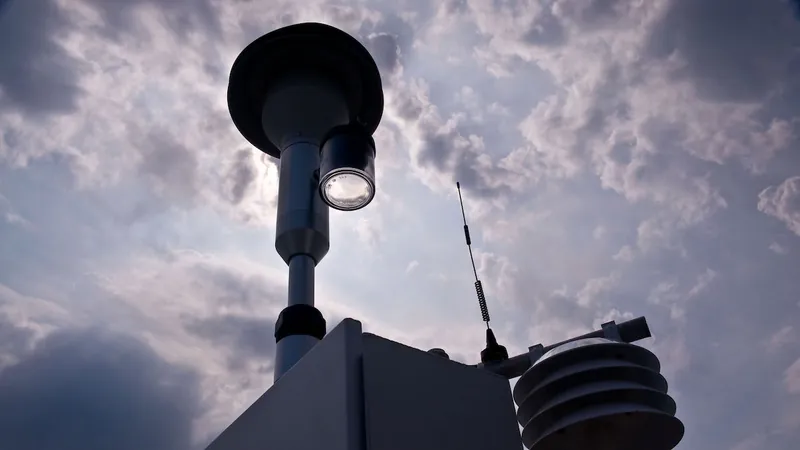
Alarm Bells Ring as EPA's Air Monitoring Network Fails to Protect 2.8 Million Americans Living in Pollution Hot Spots!
2024-11-01
Author: Ming
Alarm Bells Ring as EPA's Air Monitoring Network Fails to Protect 2.8 Million Americans Living in Pollution Hot Spots!
In a crucial and alarming update, the U.S. Environmental Protection Agency (EPA) has set a stricter standard for airborne particulate matter known as PM2.5, lowering the acceptable level from 12 to 9 micrograms per cubic meter. This change is aimed at improving air quality for millions of Americans. However, a recent study published in *Environmental Science and Technology Letters* reveals a shocking truth: the current EPA air monitoring network is unable to detect pollution hot spots, leaving 2.8 million vulnerable Americans in the dark.
Why the Current Monitoring Network is Insufficient
Under the new PM2.5 standard, areas that consistently exceed this threshold receive a "nonattainment" label, which is supposed to initiate special emissions reduction considerations. However, the current State and Local Air Monitoring Stations (SLAMS) network fails to identify nearly 44% of nonattainment areas, thereby neglecting around 20 million individuals who are at risk from poor air quality. According to the study's lead researcher, Yuzhou Wang, an environmental engineer at the University of California, Berkeley, these significant data gaps stem from the fact that SLAMS monitors are not strategically placed in the most polluted areas.
"The monitoring network that we have now reflects the previous standard," commented Sherri Hunt, an atmospheric chemist at the EPA. "When we decrease the standard, we expect that there will be some changes in terms of the monitoring network."
The Unseen Risks: Pollution Hot Spots
Even more concerning is the discovery of specific "pollution hot spots" where residents are living in areas that exceed the new PM2.5 standards. These areas, which were not captured by the current monitoring system, are primarily located in demographics with large percentages of people of color and low-income families. This unbalanced distribution of monitoring not only endangers the health of these communities but also limits their access to funding and improvement opportunities aimed at enhancing air quality.
A Call for Change: Expanding the Monitoring Network
To rectify this alarming oversight, the researchers argue that even just 10 additional monitoring sensors could dramatically improve coverage and reduce the population affected by uncaptured PM2.5 concentrations by a staggering 67%. Wang emphasizes the need for incorporating lower-cost and mobile air monitoring stations within the EPA's framework.
As the EPA updates its monitoring requirements, they are identifying new site locations to better serve overburdened communities. However, there are hurdles to overcome, as Hunt suggests that integrating low-cost and mobile sensors within the SLAMS network may not be feasible without compromising data quality.
Looking Ahead
The urgency of the situation cannot be overstated. With plans for the new monitoring sites expected to be operational by 2027, the pressure mounts for swift action to protect the health of impacted communities. As the EPA works to evolve its air monitoring capabilities, stakeholders are calling for a more equitable approach that will ensure everyone, particularly marginalized groups, has access to clean air.
Is your community suffering from poor air quality? You may be entitled to protections you never knew existed! Stay informed, advocate for change, and ensure that no one is left behind as we fight for a healthier future for all Americans.



 Brasil (PT)
Brasil (PT)
 Canada (EN)
Canada (EN)
 Chile (ES)
Chile (ES)
 España (ES)
España (ES)
 France (FR)
France (FR)
 Hong Kong (EN)
Hong Kong (EN)
 Italia (IT)
Italia (IT)
 日本 (JA)
日本 (JA)
 Magyarország (HU)
Magyarország (HU)
 Norge (NO)
Norge (NO)
 Polska (PL)
Polska (PL)
 Schweiz (DE)
Schweiz (DE)
 Singapore (EN)
Singapore (EN)
 Sverige (SV)
Sverige (SV)
 Suomi (FI)
Suomi (FI)
 Türkiye (TR)
Türkiye (TR)